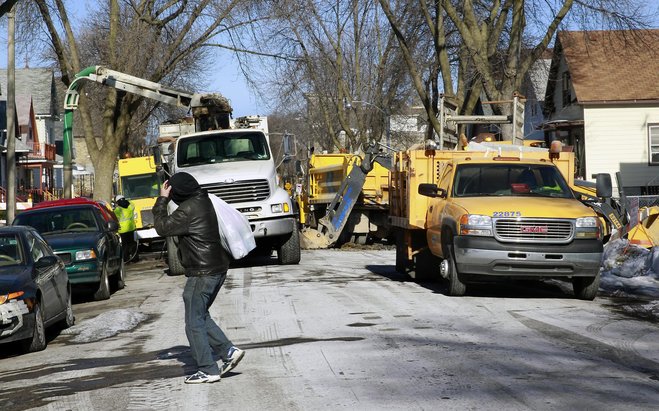Milwaukee will receive a $1 million state loan this year to begin work on an enormous and costly task of replacing 70,000 lead water pipes throughout the city.
And the first priority will be replacing pipes to 385 state-licensed day care centers, public works officials said Thursday.
No public school buildings now in use within the Milwaukee Public Schools district receive water through lead pipes, so the city will focus on the licensed day cares with young children.
It will take three years to complete installation of new water service lines at those operations, said Aaron Szopinski, city policy and research coordinator.
Officials said the state could eventually forgive the loan.
 Fully replacing all of the old lead water pipes, known as service lines or laterals, that connect municipal water mains to residences built before 1951 will cost between $511 million to $756 million, depending on lengths of the pipes. The city owns the lateral from the water main to the property line; the property owner is responsible for the section between the property line and residence.
Fully replacing all of the old lead water pipes, known as service lines or laterals, that connect municipal water mains to residences built before 1951 will cost between $511 million to $756 million, depending on lengths of the pipes. The city owns the lateral from the water main to the property line; the property owner is responsible for the section between the property line and residence.
The work might require three to five decades to complete, a timetable that could be sped up if federal funds become available.
Ald. Mark Borkowski pushed public works officials to move more quickly to replace the lead pipes.
“Let’s just do this,” Borkowski said in urging the administration of Mayor Tom Barrett to aggressively seek local, state and federal funding.
Ald. Russell Stamper II asked if water in all 70,000 residences should be tested to help set priorities for replacing those pipes.
The Milwaukee Water Works this year expanded testing of drinking water for lead to include residences where sewer and water main construction projects might dislodge the toxic metal from service lines delivering water from the mains to homes.
The tests will give public works officials a better understanding of the impact of those construction activities on lead levels in drinking water and what could be done to protect public health, Water Works Superintendent Carrie Lewis said.
Federal regulations do not require this testing to be done and there is limited information available nationally on how such construction activities effect lead levels, she said.
In January, the Water Works canceled 5 miles of water main replacement projects scheduled this year in older neighborhoods where lead pipes connect municipal mains to around 500 homes.
The decision was a precaution based on limited testing in 2015 that found cutting the lead lateral during water main replacement work increased lead levels in tap water. In each of six residences where tap water was tested, contamination increased after lead laterals were reattached to mains. The water returned to safe levels within four weeks.
Milwaukee treats Lake Michigan water to control corrosion of lead pipes and prevent contamination of drinking water. Absent disturbances from construction projects, tests of tap water required by federal regulations confirm city water is safe to drink, records show.
In letters mailed in February to properties with lead laterals, the city informed residents that disturbance of the pipes during water main replacement work, as well as water main break repairs or repairs of lateral leaks, could increase lead levels in drinking water.
The city began collecting water samples later in February in conjunction with sewer and water main repairs and lateral construction activities, according to Lewis.
City test results to date confirm that flushing of home water pipes after work is done reduces risk of lead contamination, Lewis said.
At 59 properties tested, 99% of water samples collected after flushing contained “little or no lead,” according to a summary report.